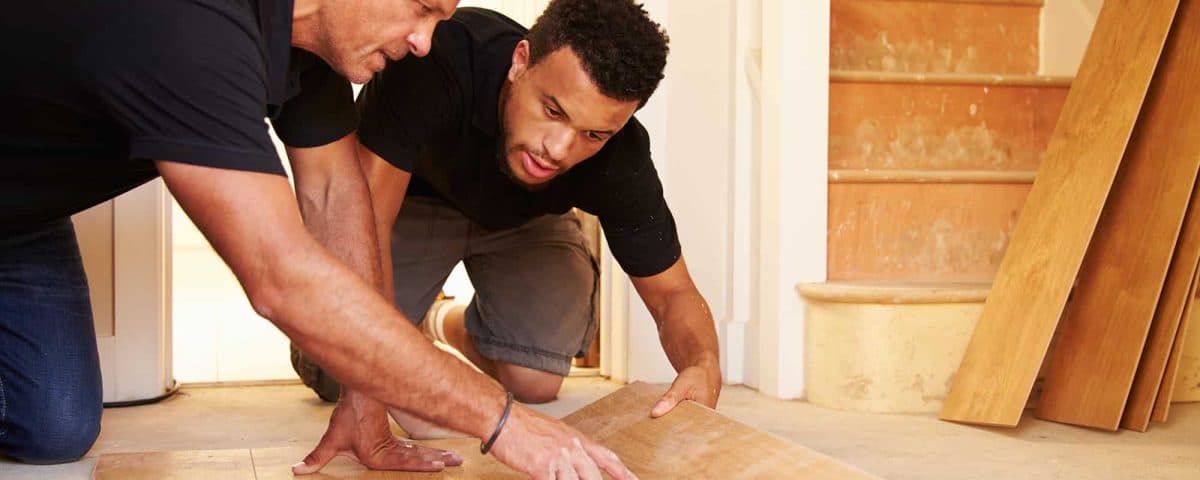- Have any flooring questions?
- 631-673-1050
- [email protected]
How to Prepare Your Subfloor for New Hardwood Floors

What are the essential tools and equipment needed for a professional-looking DIY installation of each flooring type?
July 31, 2025
What common mistakes do DIYers make when installing these flooring types, and how can they be avoided?
August 20, 2025Summary:
Why Preparation Is Foundational to Your Flooring Investment
Think of your subfloor as the chassis of a car; if it is not straight and solid, the ride will never be smooth. The same principle applies to your floors. A correctly prepared subfloor provides the stable, flat, and dry surface necessary for a lasting installation. It prevents the subtle movements that generate squeaks and keeps planks from separating over time. For hardwood floors especially, an uneven subfloor creates high spots that wear down the finish prematurely and low spots that can cause boards to feel hollow or bounce. Many flooring failures on Long Island are not due to the flooring material itself but to a subfloor that was not properly addressed before the flooring replacement began.
Assessing Your Subfloor: The First Step in a Professional Installation
A thorough assessment is the first action in any quality flooring project. Start by walking the entire area. Do you feel any soft, spongy spots? Do you hear squeaks? These are signs that the subfloor panels have loosened from the floor joists. Next, check for flatness using an 8-foot level or straightedge. The industry standard tolerance for new hardwood floors is a deviation of no more than 3/16 of an inch over a 10-foot span. Use a moisture meter to check for moisture content. Wood subfloors should be under 12%, and concrete should be under 4%. Given Long Island’s humid climate, this step is vital for preventing future issues like cupping or warping in your new wood flooring.
The Cleaning and Securing Process
Once you know what issues to address, the physical work begins with a deep clean. You must remove all debris from the subfloor surface. This includes old adhesive, paint, staples, and dust. A clean surface is necessary for leveling compounds and adhesives to bond correctly. After cleaning, secure any loose panels. Using #8 deck screws, fasten the subflooring every 6 inches along the joists. Screws provide much greater holding power than nails and will stop movement and squeaks. Any panels showing signs of rot or water damage should be cut out and completely replaced with new, equivalent-thickness sheathing. This phase is a critical part of all flooring services.
Leveling and Moisture Control for Long-Term Performance
Two of the most important aspects of subfloor preparation are achieving a flat surface and controlling moisture. Your finished floor will mirror any imperfections in the subfloor. For materials like vinyl flooring or laminate flooring, even small bumps can telegraph through to the surface. An uneven base strains the joints between boards of hardwood floors. Moisture is equally damaging. Wood is a natural material that expands and contracts with changes in humidity. If your subfloor is not protected from moisture, your new floors can warp, cup, or buckle. Proper leveling and moisture mitigation are hallmarks of a professional installation that protects your investment.
Techniques for Leveling: From Floor Sanding to Compounds
For a wood subfloor with minor high spots, floor sanding is an effective method to bring them down. While a homeowner might use a belt sander, professional flooring services often use large drum sanders for efficient and uniform results. For low spots, a cement-based self-leveling underlayment is the best solution. You pour the product over the primed low spot, and it settles into a perfectly flat, firm patch. For larger areas with significant level issues, installing a new layer of plywood over the existing subfloor may be required to create a new, flat surface before your flooring replacement can proceed. This process adds stability and gives you an ideal base.
Moisture Barriers and Final Preparations for Floor Finishing
The final preparation step involves moisture control. Over a concrete slab, this means installing a vapor retarder, typically a 6-mil polyethylene sheet with overlapped and taped seams. For wood subfloors, the standard is a layer of 15-lb asphalt-saturated felt paper. This material slows the transmission of moisture vapor, helping to keep the wood flooring stable. Before the final floor finishing stage can begin, you must acclimate the new flooring material. Let your new hardwood floors sit in the room where they will be installed for at least three to five days. This allows the wood to adjust to your home’s unique temperature and humidity, which is the final step in preventing future movement.
Achieve the Best Results for Your New Hardwood Floors
While it is possible to prepare a subfloor yourself, the process requires attention to detail and an recognizing of how flooring systems work. The quality of this foundational work directly impacts the beauty and durability of the final surface. For an outcome that lasts, consider utilizing professional flooring services. A skilled team has the tools and knowledge to handle every aspect of the project, from initial assessment and subfloor leveling to the final installation and floor finishing. To protect your investment and enjoy beautiful, stable hardwood floors on Long Island, contact us to discuss your flooring replacement project.


